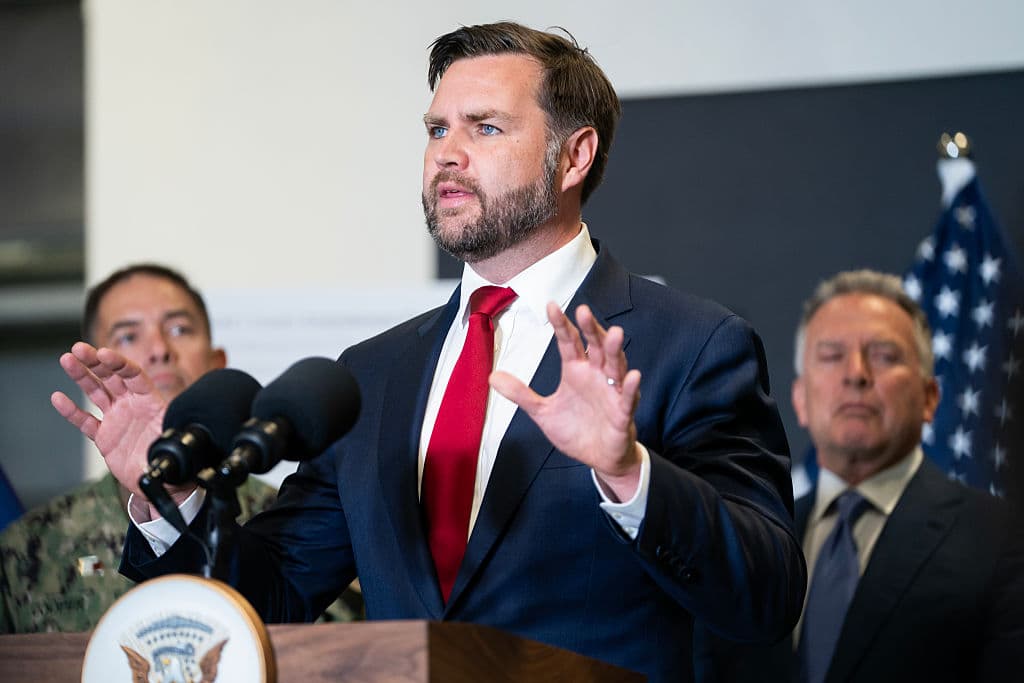During his recent visit to Israel, Vice President JD Vance expressed optimism about the ongoing implementation of the 20-point Gaza plan. His comments come amid growing anxiety among Israelis regarding the potential ramifications of Hamas’s rapid regrouping in Gaza. As concerns mount, questions arise about whether the American approach aligns with the complex realities of the Middle East.
Speaking at an American military facility in Kiryat Gat, Vance criticized media narratives that focus on setbacks to the cease-fire, stating, “It’s not the end; it is, in fact, exactly how this is going to have to happen.” He emphasized that the success of the Gaza plan would extend beyond the region, suggesting that former adversaries could establish peaceful relations with Israel. “We know that a lot of our Gulf Arab friends would like to have normalized relations with Israel,” he noted.
Israeli Prime Minister Benjamin Netanyahu has hinted at possible future agreements with countries such as Indonesia and Saudi Arabia. However, many Israelis perceive the resurgence of Hamas as a significant threat that could destabilize the fragile peace. This concern is compounded by the involvement of Turkey and Qatar, both of which have historically supported Hamas.
Concerns about the plan’s feasibility were voiced by Doron Matza, a professor at Achva College, who argued that the approach outlined in the Trump plan involves “too many power centers and too much internationalization.” He highlighted a proposed United Nations Security Council resolution aimed at establishing a Gaza stabilizing force, questioning whether this aligns with Israeli interests. Matza compared the current American and Israeli strategies to differing post-World War II approaches, suggesting that while the U.S. favors economic incentives, Israel’s priorities are shaped by historical and ideological considerations.
The Vice President asserted that Washington envisions a future where both Palestinians in Gaza and Israelis can coexist securely. Nonetheless, Israel remains wary of leaving Hamas as the dominant power in Gaza. A report from Kann News indicated that Hamas has already appointed half of the “technocrats” who would oversee governance in Gaza under the U.S. plan, with approval from Egyptian, Qatari, and Turkish mediators.
Vance stressed the necessity for Israeli approval of these appointments, yet experts like Joe Truzman, editor of the Foundation for Defense of Democracies’ Long War Journal, pointed out that Hamas remains deeply entrenched in Gaza’s governance. He noted, “Almost everything that happens in Gaza, Hamas has a hand in it in one way or the other,” including the selection of interim government officials.
As reconstruction efforts in Gaza are planned, Vance stated that such initiatives would only occur in areas free from Hamas’s presence. Nonetheless, Washington is reportedly urging Israel to adopt a more tempered response to violations by Hamas, particularly along the “yellow line” controlled by Israeli forces.
Despite commitments made during the cease-fire, including Hamas’s agreement to release all hostages within the initial 72 hours, the process has been slow. A week later, the remains of deceased hostages are still not fully recovered. Vance acknowledged that “some of these hostages are buried under thousands of pounds of rubble,” complicating recovery efforts.
Former President Donald Trump also weighed in on the situation, expressing optimism on social media about Hamas potentially laying down arms, stating, “If they do not, an end to Hamas will be fast, furious & brutal!” However, Truzman remarked on Hamas’s lack of response regarding disarmament when confronted with Trump’s peace plan.
The prospect of Arab and Muslim nations contributing to a multinational force in Gaza appears to lack enthusiasm for confronting Hamas. This sentiment is echoed by Matza, who cautioned that returning to full-scale conflict would not be straightforward. “It’s not like you can flip a switch and you’re back,” he said, suggesting that maintaining the cease-fire may currently take precedence over executing the agreements that facilitated it, potentially benefiting Hamas in the process.
As the situation develops, the delicate balance between pursuing peace and addressing immediate threats remains a focal point for both Israeli and American officials.
